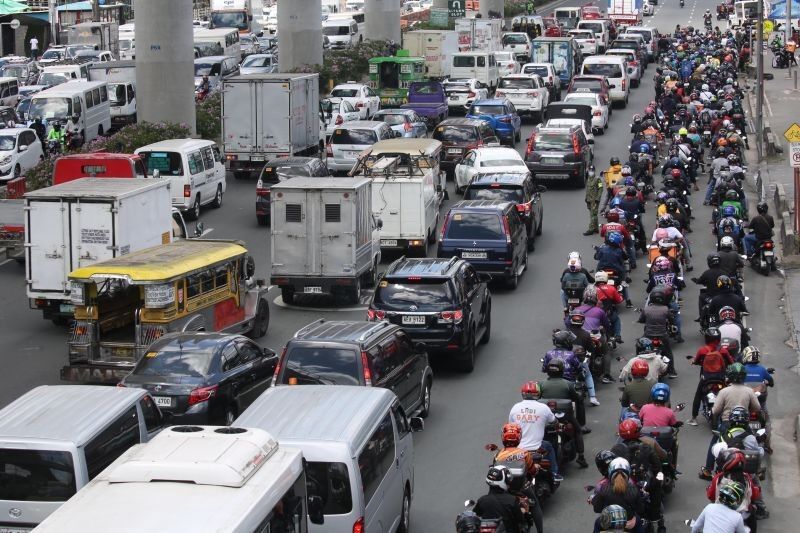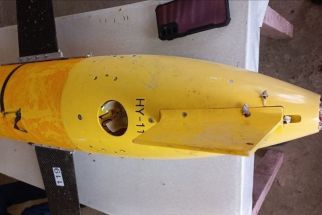Familiar transport woes show no lessons learned from last ECQ

MANILA, Philippines — On the first day of the second enhanced community quarantine, it took all of three hours for editor and commuter Carl Lamiel to get from his home in San Mateo to his workplace in Mandaluyong.
After waking up in the wee hours of the morning for a ride — already a common experience for commuters in the Philippines — he was forced to ride with his father on a scooter to the nearest highway when he noticed that no buses were passing by.
With the announcement of the country's second ECQ, transportation officials announced that public transportation would be unaffected by curfews but capacity would be scaled back.
"The problem with today is a lot of these public utility vehicles did not operate...Earlier this morning the traffic from the Quezon City border checkpoint was at 1.5 kilometers. It was worse for those going to Marikina," he told Philstar.com in an online exchange.
"Sa totoo lang, kawawa ang commuting public ngayong araw (In all honesty, the situation is pitiful for commuters today)," he said in a Facebook post.
Like most Filipinos, all he could do was wait.
Memories of the pandemic's earlier transport woes are still fresh. The first ECQ in March saw the familiar transport pitfalls that commuter groups have long bemoaned in the country's public transportation system: long lines at public transportation hubs and extreme congestion on major thoroughfares.
In the absence of transportation, thousands of Filipinos, some of them healthcare frontliners, were forced to walk to work or learn to bike, in a pandemic that requires social distancing.
Somehow, photos of the same transport woes flooded social media over a year later.
"This is just like the ECQ in 2020. It's so obvious on social media that many were stranded. Actually, just go out to the highways and you'll see that many people were waiting and some just went home," Primo Morillo, convenor of commuter advocacy group The Passenger Forum, told Philstar.com in a phone call in mixed Filipino and English.
"When operators found out the guidelines, they didn't field drivers. You cannot expect them to absorb the losses. How can you earn at 50% capacity? It's simple mathematics. Why would they go out if they won't earn?"
Heavy-handed enforcement?
Morillo also pointed to the new checkpoints around the so-called "NCR+ bubble" as one factor that only worsened traffic woes for commuters.
"Why are there blockades between NCR and Bulacan, Cavite or Laguna if supposedly it's one bubble? So that just made the problem worse," he said.
Lamiel held the same sentiments after experiencing what he said was "overpowering" enforcement up close.
"We couldn't dodge the traffic because of the checkpoints. When we stopped at a checkpoint they were asking for all our IDs, then they counted the passengers on the bus," he said.
"[The enforcers] reprimanded the bus because it was supposedly overloading based on guidelines. They told the bus [operator] to offload passengers next time."
Over 9,000 police personnel have been deployed to man the 1,106 quarantine control points within the so-called NCR+ bubble to strictly implement protocols amid the ECQ and uniform curfew.
Philstar.com has reached out to Police Brig. Gen. Brandi Usana, spokesperson of the Philippine National Police for comment, but he has yet to respond as of this post.
"After the checkpoints, the trip was faster but so many were stranded at Batasan and Commonwealth (in Quezon City) because there really weren't that many buses. At the UV lines so many people were racing when passengers would alight...because of the delay caused by checkpoints, their schedules were broken," Lamiel also said.
"I don't know if overpowering is the word, but it's so over the top. I mean, we're all basically inside the NCR+ bubble and they have checkpoints like these. It would have been better if the government is efficient in implementing the checkpoints but they just become chokepoints in the long run."
At a press briefing Sunday, Police Lt. Gen. Cesar Binag, who serves as commander of the Joint Task Force COVID Shield, said that the personnel manning the established checkpoints will only check whether motorists are authorized persons outside residences, or APORs.
"Those unauthorized to pass through will be turned back. We urge people not to insist or even go out if they know they're not authorized because we will turn them back," Binag said in mixed Filipino and English.
"There will be no checking of temperature. Our expectation is just the documents to prove you are APORs. We call on people to prepare their documents for smooth implementation."
The same control points will also be put up in Batangas, the PNP deputy chief for operations disclosed, to ensure no unauthorized persons slip into the bubble undetected.
"I understand if they're checking compliance. But if you really block them from passing through, it is counterproductive to physical distancing. Because people will congregate, and they're around each other for a longer time," Morillo said.
"We already know buses aren't well-ventilated, but they have no choice. This didn't just affect the passengers, but also the people who weren't able to catch a ride."
'Orderly, light traffic'
Morillo also pointed to what he said was the lack of coordination among government agencies leading up to the ECQ.
Fears over the possible effects on mass transportation even came before the actual guidelines themselves. On Saturday, the Move as One transport coalition called on the government to ensure a stable supply of transport across all modes after officials confirmed plans to institute another ECQ.
The guidelines for public transportation only came a day later at a press briefing, which the commuter advocate said led people to assume that the guidelines would be the same.
Asked for the Metro Manila Development Authority's assessment of the first day of ECQ, MMDA spokesperson Celine Pialago had this to say in a text message: "Right now, the traffic situation in all major thoroughfares is light."
Department of Transportation spokesperson Goddess Libiran had the same sentiments. "Generally speaking, our first day was orderly," she also told Philstar.com in a text message. "There were only lines in the outskirts [of the bubble,] but it was okay on the inside."
But it doesn't look like Tuesday will be any better, either. Later Monday, the Metro Rail Transit-Line 3 reminded the public about its scheduled Holy Week Maintenance starting Tuesday.
"We're expecting not many will be affected given that the workforce is smaller during Holy Week," Libiran said.
"The DOTr did not decrease or restrict public transportation. The available public transportation in GCQ was still allowed to operate this ECQ. What we did was we ordered for the strict implementation of health protocols across all modes, and that only Authorized Persons Outside of their Residences will be allowed to board."
Morillo says what is needed is a "change of attitude" in the way government officials view the traffic situation.
"When we say commuters are stranded, we're referring to workers. These people didn't go out to go to malls, because those are closed. They went out because they have jobs. If they don't get to their jobs, the economy doesn't move," he said.
- Latest
- Trending
































